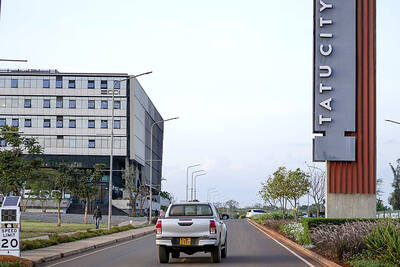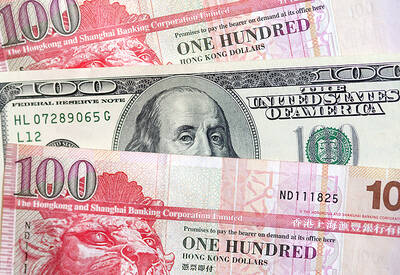Goldman Sachs Group Inc is just getting started in the fast-expanding world of sustainable finance.
The New York-based lender plans to issue more environmental, social and governance (ESG) bonds on a regular basis as part of its plans to deploy US$750 billion in sustainable financing, investing and advisory activity by 2030, according to Goldman Sachs Bank USA chief executive officer Carey Halio. It sold bonds aimed at financing environmentally and socially conscious projects for the first time on Wednesday.
“We expect to issue once every 12 to 18 months with respect to benchmark issuance and we have the flexibility to do other kinds of liabilities as well in addition to the benchmark bond,” Halio said in an interview on Friday. “We think it will be a core part of our strategy.”
Goldman said its sustainability bond was well received by investors from the US, Europe and Canada, in addition to other countries, including new investors. The order book reached well north of US$3 billion at the peak, with more than half of the deal going to ESG accounts. The demand helped it price 5 basis points inside of the bank’s normal credit curve for the tenor, Halio said.
“We do think the size of our ESG bonds will grow over time,” Halio said. “We think investors value the liquidity in the benchmark size issuance.”
The firm will also consider issuing in different currencies in the future, including in euros.
Goldman Sachs Group chairman and chief executive David Solomon said in a statement on Friday that building a low-carbon and an inclusive economy is a “business imperative” and the lender is demonstrating its commitment by using the same financial toolkit the bank recommends to its clients.
Financial firms globally have raised about US$25.5 billion of ESG-linked debt this year, making the sector the biggest issuer of sustainable bonds after governments, according to data compiled by Bloomberg. The sector borrowed a record US$111.8 billion last year. That included deals from Bank of America Corp, Citigroup Inc and Morgan Stanley.
Goldman is joining other top Wall Street banks that have been issuing ESG bonds amid pressure for the private sector to do more to promote ESG issues. JPMorgan Chase & Co, the biggest US bank by assets, priced a US$1 billion social bond on Tuesday and raised a similar amount of green debt last year.
“It was so critical to us to do a robust evaluation of what we’ve seen over recent years to identify a group of themes where we feel we can really advance the transition and advance the story globally,” Goldman global head of investor relations Heather Miner said in the interview.
Nuveen, which oversees US$1.2 trillion in assets, participated in the Goldman deal, said Stephen Liberatore, head of fixed-income ESG and impact investing strategies at the firm. They found the valuations attractive and liked the bank’s sustainability framework, which is “robust” and allows them to invest in a broad range of environmental and social projects.
Proceeds will help to fund or refinance a combination of loans and investments made in projects and assets that meet Goldman’s green and social eligibility criteria, including clean energy, sustainable transport and financial inclusion, according to the framework.
“The more issuers come and the more prominent those issuers are, only helps further the message that we are looking at things in a different way,” Liberatore said. “That’s a real positive and should help borrowers that maybe aren’t sure what they need to do.”

To many, Tatu City on the outskirts of Nairobi looks like a success. The first city entirely built by a private company to be operational in east Africa, with about 25,000 people living and working there, it accounts for about two-thirds of all foreign investment in Kenya. Its low-tax status has attracted more than 100 businesses including Heineken, coffee brand Dormans, and the biggest call-center and cold-chain transport firms in the region. However, to some local politicians, Tatu City has looked more like a target for extortion. A parade of governors have demanded land worth millions of dollars in exchange

Hong Kong authorities ramped up sales of the local dollar as the greenback’s slide threatened the foreign-exchange peg. The Hong Kong Monetary Authority (HKMA) sold a record HK$60.5 billion (US$7.8 billion) of the city’s currency, according to an alert sent on its Bloomberg page yesterday in Asia, after it tested the upper end of its trading band. That added to the HK$56.1 billion of sales versus the greenback since Friday. The rapid intervention signals efforts from the city’s authorities to limit the local currency’s moves within its HK$7.75 to HK$7.85 per US dollar trading band. Heavy sales of the local dollar by

Taiwan Semiconductor Manufacturing Co’s (TSMC, 台積電) revenue jumped 48 percent last month, underscoring how electronics firms scrambled to acquire essential components before global tariffs took effect. The main chipmaker for Apple Inc and Nvidia Corp reported monthly sales of NT$349.6 billion (US$11.6 billion). That compares with the average analysts’ estimate for a 38 percent rise in second-quarter revenue. US President Donald Trump’s trade war is prompting economists to retool GDP forecasts worldwide, casting doubt over the outlook for everything from iPhone demand to computing and datacenter construction. However, TSMC — a barometer for global tech spending given its central role in the

An Indonesian animated movie is smashing regional box office records and could be set for wider success as it prepares to open beyond the Southeast Asian archipelago’s silver screens. Jumbo — a film based on the adventures of main character, Don, a large orphaned Indonesian boy facing bullying at school — last month became the highest-grossing Southeast Asian animated film, raking in more than US$8 million. Released at the end of March to coincide with the Eid holidays after the Islamic fasting month of Ramadan, the movie has hit 8 million ticket sales, the third-highest in Indonesian cinema history, Film